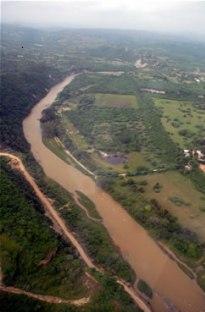- English
- Español
Integrated Water Resources Management
Past Projects
Publications
Promoting the Sustainable and Strategic Utilization of Transboundary Groundwater of Hispaniola: The Artibonito Intermountain Aquifer and The Massacre Coastal Aquifer System
Background
In 2004 ISARM-Americas identified two transboundary aquifers in the
“Inventory of Transboundary Aquifers of the Americas,” which was completed by
UNESCO in cooperation with the Organization of American States (OAS). These two aquifiers were the Artibonito and the Massacre shared by the Republic of Haiti
and the Dominican Republic, both of which were recognized as priority
case-studies for project implementation. To this end, the two countries
established the goal of “sustainably managing the aquifers in the intermountain
and coastal regions of Hispaniola with a view to reducing land degradation,
excess erosion-sedimentation, and poverty.”
A Project Development Facility, Block A (PDF-A) request for the preparation of this Medium Sized Project (MSP) was subsequently submitted to the Global Environment Facility (GEF) and approved in September 2005. The preparatory work was executed by the OAS with the support of UNESCO-IHP, and implemented by the United Nations Environment Programme (UNEP). A key outcome of this effort was the recommendation for the development and execution of a framework within which the two island states could manage the water resources of these priority waters in such a manner as to achieve increased and sustained environmental and economic benefits for the people of both countries. In particular, the need for such a framework was assessed as critical in light of the likely changes in availability of surface waters as a result of drying trends in the region that are forecasted to occur as a result of global climatic change. Consequently, the identification and possible exploitation of alternative sources of water, to minimize risks of over-exploitation of current water sources, was identified as a priority action with implications for adaptation to climate change in water stressed regions.
Project Goals

The objective of the project is to develop and implement a strategic framework
and program of actions to maintain, protect, and utilize the shared
transboundary groundwater reserves of the island of Hispaniola. This will be
done for the benefit of the people of the island, by integrating ecological
management and economic development activities, based upon the comprehensive
groundwater studies to be undertaken within the context of this proposed MSP.
Specifically, the MSP will address three major elements of the use and
management of groundwaters within the Macasia-Guayamoc Aquifer in the Artibonito
River Basin and the Massacre Aquifer in the Massacre River Basin, the most
important being the reduction of poverty and improvement of water security.



